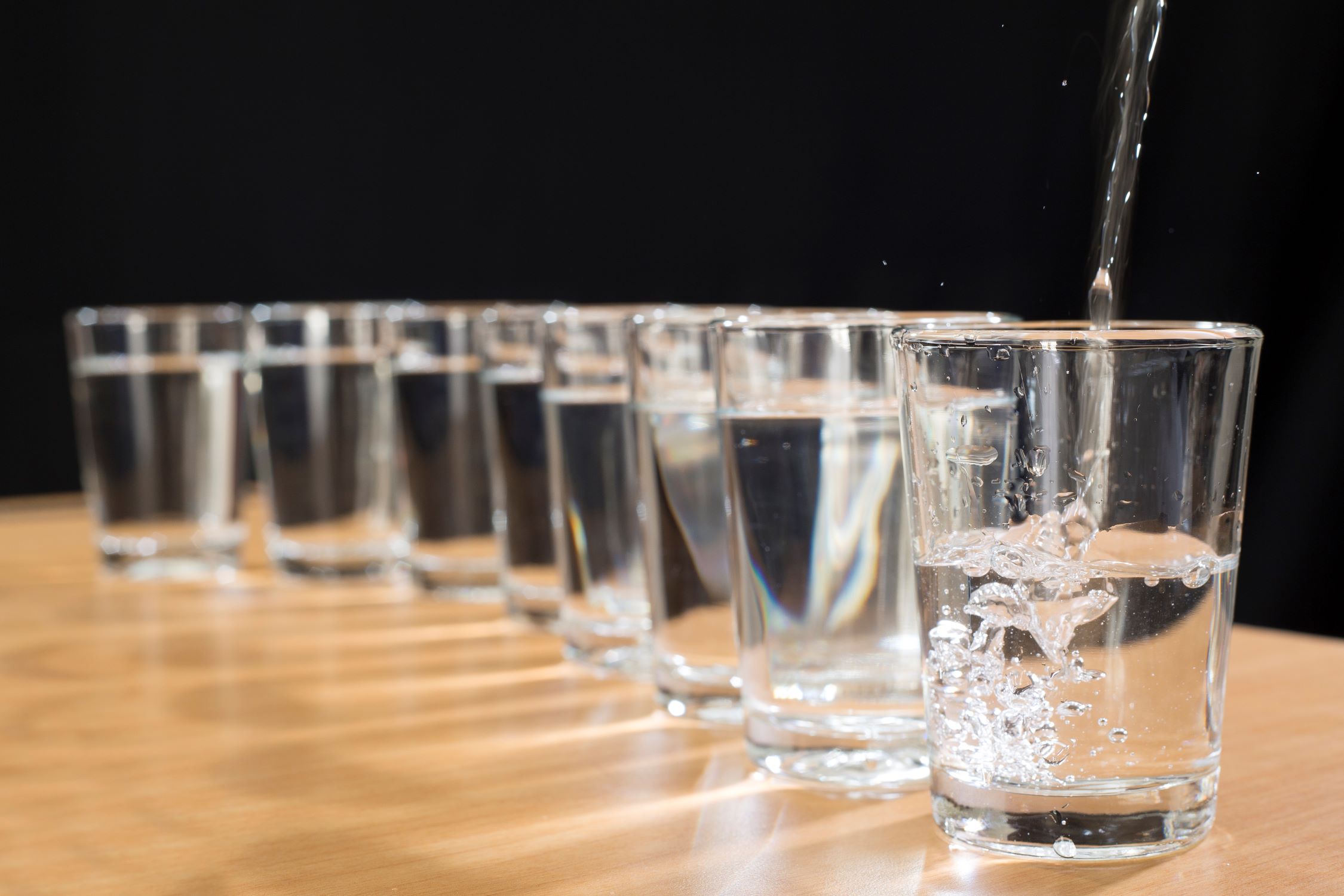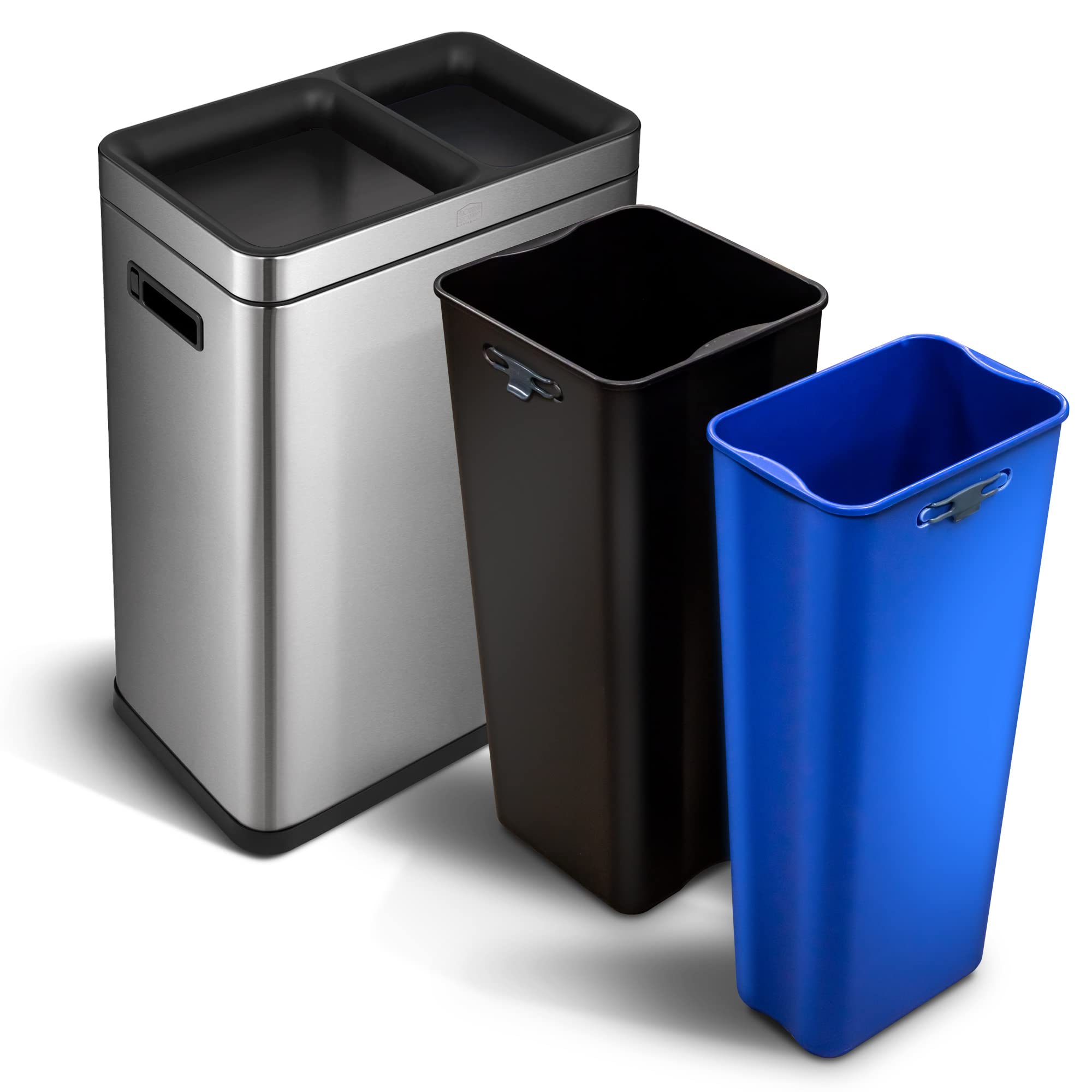Home>Furniture & Design>Interior Design Trends>How Many Glasses Of Water In 1 Liter


Interior Design Trends
How Many Glasses Of Water In 1 Liter
Published: February 4, 2024
Discover the importance of water intake and how many glasses are in a liter. Stay hydrated with these interior design trends.
(Many of the links in this article redirect to a specific reviewed product. Your purchase of these products through affiliate links helps to generate commission for Storables.com, at no extra cost. Learn more)
Introduction
Water is an essential element for sustaining life, and its consumption plays a crucial role in maintaining overall health and well-being. The amount of water we drink daily is often measured in liters, a standard unit of measurement that provides a clear indication of our hydration levels. Understanding the relationship between the volume of water and its measurement in liters is fundamental to ensuring that we meet our body's hydration needs.
In this article, we will delve into the significance of water consumption, shedding light on the correlation between the volume of water and its measurement in liters. By exploring the importance of drinking enough water, the factors influencing our water intake, and the practical implications of these measurements, we aim to provide valuable insights into the role of water in our daily lives. Whether it's understanding the optimal amount of water to drink or recognizing the factors that influence our hydration needs, this exploration will serve as a comprehensive guide to help individuals make informed decisions about their water intake.
As we navigate through the intricacies of water measurement and its impact on our well-being, it becomes evident that the simple act of drinking water transcends mere hydration. It is a fundamental aspect of self-care and a cornerstone of a healthy lifestyle. By unraveling the mysteries of water measurement and consumption, we can empower ourselves to prioritize our health and vitality, one liter at a time.
Key Takeaways:
- Drinking 4 glasses of water equals about 1 liter. It’s like a simple math problem for staying healthy – 4 glasses = 1 liter!
- Factors like exercise, climate, and diet affect how much water we need. It’s like a puzzle to figure out how much water our body wants!
Read more: How Many Glass Of Water In 1 Gallon
Understanding the Measurement
The measurement of water in liters is a fundamental aspect of understanding and tracking our daily hydration needs. A liter, denoted as "L," is a unit of volume in the metric system and is equivalent to 1,000 milliliters. This standardized measurement provides a clear and practical way to quantify the amount of water we consume, allowing us to monitor our hydration levels effectively.
When we talk about the volume of water in liters, it's essential to comprehend the practical implications of this measurement. For instance, a standard drinking glass typically holds around 250 milliliters, which is equivalent to 0.25 liters. This means that drinking four glasses of water would amount to approximately 1 liter, serving as a simple and tangible way to visualize our daily water intake.
Furthermore, understanding the measurement of water in liters enables us to make informed decisions about our hydration goals. Health authorities often recommend a daily water intake of around 2 liters for the average adult, which equates to approximately eight standard glasses. By recognizing this correlation between the volume of water and its measurement in liters, individuals can gauge their daily consumption more effectively, ensuring that they meet their body's hydration requirements.
Moreover, the concept of liters as a measurement for water consumption extends beyond individual servings. It also facilitates broader discussions about the importance of staying adequately hydrated, both for overall health and specific activities such as exercise or outdoor pursuits. Whether it's carrying a 1-liter water bottle during a workout or tracking the number of liters consumed throughout the day, this measurement serves as a practical and versatile tool for managing our hydration needs.
In essence, understanding the measurement of water in liters empowers individuals to take charge of their hydration habits. It provides a tangible framework for setting and achieving daily water intake goals, fostering a proactive approach to maintaining optimal hydration levels. By embracing this understanding, we can navigate the complexities of hydration with clarity and purpose, ensuring that we prioritize our well-being through mindful and informed water consumption.
Importance of Drinking Enough Water
Ensuring an adequate intake of water is paramount for sustaining overall health and well-being. The importance of drinking enough water extends far beyond mere hydration; it is intricately linked to numerous physiological functions and plays a pivotal role in supporting our body's vital processes.
Hydration is essential for maintaining the balance of bodily fluids, which in turn impacts digestion, nutrient absorption, circulation, body temperature regulation, and the transportation of nutrients and oxygen to cells. By consuming enough water, we support these fundamental functions, thereby promoting optimal physical performance and cognitive function.
Moreover, adequate hydration is closely associated with weight management and metabolism. Drinking water can help control calorie intake, enhance metabolism, and serve as a natural appetite suppressant, contributing to weight loss and overall health. Additionally, staying well-hydrated aids in the elimination of waste and toxins from the body, supporting healthy kidney function and reducing the risk of urinary tract infections.
Furthermore, the impact of water on skin health and appearance should not be overlooked. Proper hydration can help maintain skin elasticity, promote a radiant complexion, and delay the onset of signs of aging. By drinking enough water, individuals can nurture their skin from within, achieving a natural and vibrant glow.
In the realm of physical activity, adequate hydration is crucial for optimizing performance and preventing dehydration-related complications. Whether engaging in moderate exercise or intense physical exertion, maintaining proper hydration levels is essential for sustaining endurance, regulating body temperature, and minimizing the risk of heat-related illnesses.
Beyond the physiological benefits, drinking enough water also supports mental acuity and emotional well-being. Dehydration can lead to cognitive impairment, mood disturbances, and reduced concentration, highlighting the profound impact of hydration on mental and emotional functions.
In essence, the importance of drinking enough water transcends basic hydration; it is a cornerstone of holistic health and vitality. By recognizing the multifaceted benefits of adequate hydration, individuals can prioritize their water intake as an integral component of their overall well-being, nurturing their bodies and minds with each refreshing sip.
There are 4.2 glasses of water in 1 liter. So if you want to drink 8 glasses of water a day, you would need to drink about 2 liters of water.
Factors Affecting Water Intake
Several factors influence an individual's water intake, shaping their hydration needs and consumption patterns. Understanding these factors is crucial for tailoring hydration practices to meet specific requirements and maintaining optimal health and well-being.
-
Physical Activity: Engaging in physical exercise or strenuous activities increases the body's demand for water. Sweating during workouts leads to fluid loss, necessitating higher water intake to replenish lost fluids and maintain hydration levels. Athletes and individuals with active lifestyles often require more water to support their increased physical exertion.
-
Climate and Temperature: Environmental factors, such as hot and humid weather, can accelerate fluid loss through perspiration, elevating the need for additional hydration. In contrast, cold climates may reduce the sensation of thirst, potentially leading to inadequate fluid intake. Adapting water consumption to the prevailing climate is essential for addressing the body's varying hydration requirements.
-
Metabolic Rate and Body Size: Metabolic differences and variations in body size influence the rate at which individuals process fluids. Factors such as metabolic efficiency, body composition, and overall size can impact the body's water needs. Individuals with higher metabolic rates or larger body sizes may require increased water intake to support their physiological functions.
-
Health Conditions and Medications: Certain health conditions, such as fever, vomiting, diarrhea, or urinary tract infections, can heighten the risk of dehydration, necessitating augmented water intake to restore fluid balance. Additionally, specific medications, such as diuretics or those that induce increased urination, may elevate the need for additional hydration to counteract fluid loss.
-
Dietary Factors: The composition of one's diet can influence overall water intake. Foods with high water content, such as fruits, vegetables, and soups, contribute to hydration levels. Conversely, the consumption of salty or processed foods may increase the body's water requirements due to their potential to induce thirst and water retention.
-
Pregnancy and Lactation: Pregnant and breastfeeding individuals have heightened water needs to support fetal development, milk production, and overall maternal health. Adequate hydration is essential during these stages to ensure optimal well-being for both the parent and the developing child.
-
Individual Preferences and Habits: Personal preferences, daily routines, and habitual behaviors play a significant role in determining water intake. Some individuals may naturally gravitate towards consuming more fluids, while others may need to consciously incorporate hydration practices into their daily regimen.
By recognizing and adapting to these factors, individuals can tailor their water intake to align with their specific needs, promoting optimal hydration and overall health.
Conclusion
In conclusion, the measurement of water in liters serves as a fundamental tool for understanding and managing our daily hydration needs. By recognizing the practical implications of this measurement, individuals can gain valuable insights into their water consumption, enabling them to make informed decisions about their hydration goals. Whether it's visualizing the volume of water through standard glasses or tracking overall intake, the concept of liters provides a tangible framework for prioritizing optimal hydration.
The importance of drinking enough water cannot be overstated, as it is intricately linked to numerous aspects of our health and well-being. From supporting vital physiological functions to promoting skin health, weight management, and mental acuity, adequate hydration is a cornerstone of holistic vitality. By embracing the multifaceted benefits of proper hydration, individuals can nurture their bodies and minds, fostering a proactive approach to self-care and overall wellness.
Furthermore, understanding the factors that influence water intake empowers individuals to tailor their hydration practices to meet specific requirements. Whether adjusting fluid intake based on physical activity, climate, metabolic differences, or dietary factors, recognizing these influences is essential for maintaining optimal hydration levels. By adapting to these factors, individuals can ensure that their water intake aligns with their unique needs, promoting overall health and well-being.
In essence, the measurement of water in liters transcends mere quantification; it symbolizes a commitment to prioritizing self-care and vitality. By embracing this understanding, individuals can navigate the complexities of hydration with clarity and purpose, ensuring that they meet their body's fundamental need for water. As we embark on this journey of mindful water consumption, let us raise a glass – or perhaps a liter – to the profound impact of hydration on our lives. Cheers to a well-hydrated and vibrant existence, one liter at a time.
Frequently Asked Questions about How Many Glasses Of Water In 1 Liter
Was this page helpful?
At Storables.com, we guarantee accurate and reliable information. Our content, validated by Expert Board Contributors, is crafted following stringent Editorial Policies. We're committed to providing you with well-researched, expert-backed insights for all your informational needs.
















0 thoughts on “How Many Glasses Of Water In 1 Liter”